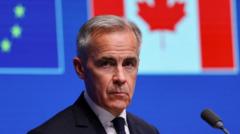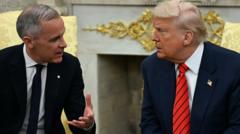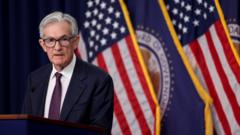As Canada grapples with the repercussions of U.S. tariffs on its exports, Prime Minister Mark Carney's approach to reducing internal trade barriers raises questions about its potential to substitute lost trade with the United States.
Canada's Challenge: Domestic Trade Versus U.S. Tariff Impact

Canada's Challenge: Domestic Trade Versus U.S. Tariff Impact
Prime Minister Mark Carney aims to bolster Canadian trade internally as tariffs from the U.S. loom large, yet experts question its feasibility and effectiveness.
In response to the significant economic challenges posed by President Trump's tariffs, Prime Minister Mark Carney has proposed an ambitious plan to enhance internal trade within Canada. Since assuming office in the spring, Carney has pledged to eliminate existing bureaucratic barriers hampering movement of goods and labor across the country by Canada Day, July 1. This initiative follows decades of discussions on the need for smoother interprovincial trade.
Carney, transitioning from his former role as a central banker to a politician, has recently ushered a bill through Parliament aimed explicitly at dismantling federal impediments to trade. He emphasized in a statement, “We will give ourselves more than any foreign nation can ever take away by building one Canadian economy — the strongest economy in the G7.”
However, while this plan to foster a unified national economy is appealing, significant challenges remain. The diversity of rules established by Canada's ten provinces and three territories creates a labyrinth of trade barriers that many economists argue are more obstructive than any federal constraints. Although they generally support the idea of opening trade domestically, experts warn that Canada's vast geographical size and relatively limited market population of 40 million mean it might struggle to replicate the sales volumes previously relied upon from the U.S. market.
In summary, while Carney's strategy seeks to strengthen Canada's economy amidst external pressures, its ability to compensate for lost U.S. trade remains uncertain, according to economic analysts who believe that genuine internal trade reforms and the global context will play critical roles in shaping the nation's financial future.





















